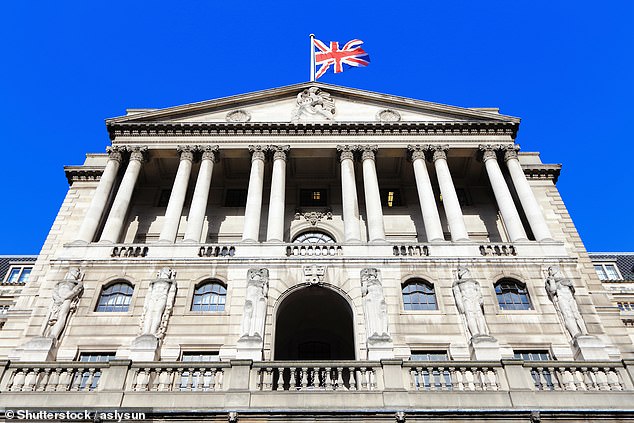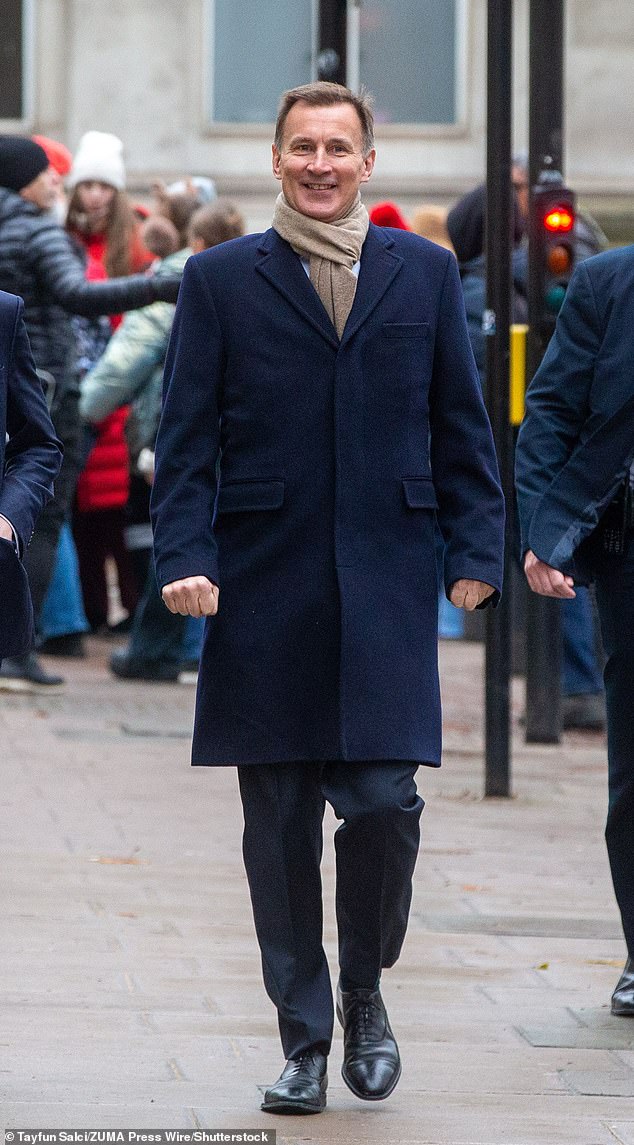- Chancellor Jeremy Hunt said it was positive to see inflation continuing to fall
- Inflation came down from 11.1 per cent last autumn to 4.6 per cent today
Hopes for an interest rate cut in the first half of next year have been reinforced after official figures yesterday showed that pay growth has slowed sharply.
Average weekly earnings rose by 7.3 per cent in the three months to October compared with the same period last year, according to the Office for National Statistics.
While that is still a strong level of growth it is down from 7.8 per cent the month before – representing the biggest such drop in nearly two years.
And it appears to add to the evidence that the Bank of England‘s painful interest rate medicine is doing its job of cooling the economy and easing inflation pressures.
The wage figures are likely to have little impact on this week’s Bank of England interest rate decision.
The Bank is widely expected to leave its benchmark rate on hold at 5.25 per cent on Thursday.
But financial markets will closely scrutinise the Bank’s language for clues about when it will deduce to start cutting.

This appears to add to the evidence that the Bank of England’s (pictured) painful interest rate medicine is doing its job of cooling the economy and easing inflation pressures
Traders are betting that rates will start to fall from June with some now believing they could do so in May.
However, the Bank has until now been pushing back against those market bets, saying they are underestimating how sticky inflation may demonstrate to be.
Inflation has come down sharply from a high of 11.1 per cent last autumn to 4.6 per cent today but the Bank’s target is for it to drop to 2 per cent.
The fall in wage growth, together with stagnating GDP, could persuade some of the Bank’s rate-setting Monetary Policy Committee (MPC) who have been calling for rate rises to now change tack and vote to keep them on hold, experts said.
The figure also showed unemployment remained unchanged at 4.2 per cent.
And in another sign of the labour market cooling, the data showed that the number of job vacancies in the economy fell for the 17th month in a row in the three months to November, the longest period of refuse on record.
However, the number of vacancies, at 949,000, remains at a historically high level.
Despite the wage growth slowdown, it was not all gloom for Britain’s workers – since falling inflation means that pay is rising faster than prices.
The latest figures showed that, in real terms, pay is growing by 1.2 per cent, its strongest pace since September 2021.
Chancellor Jeremy Hunt said: ‘It’s positive to see inflation continue to fall and real wages growing.’

Chancellor Jeremy Hunt said that it was positive to see inflation continue to fall and ‘real wages growing’
The figures will add to hopes of a so-called ‘soft landing’ for the UK – in which inflation is brought under control without the economy slowing so much that it falls into a recession.
Elizabeth Martins, UK senior economist at HSBC, said: ‘This release strikes us as a pretty positive one for the UK: the labour market appears to be disinflating, without any rise (yet) in unemployment, and real incomes are back on the rise again.
‘Of course, nothing lasts forever – one or all of these trends may change or go into reverse. But considering some of the predictions this time last year, things could be a lot worse.’
Martin Beck, chief economic advisor to forecasters EY ITEM Club, said: ‘The pay data is clearly now moving in the right direction from the perspective of the Monetary Policy Committee.
‘But given that annual pay growth is still running at more than twice the pace that would be consistent with the Bank of England’s 2 per cent inflation target, the MPC is likely to stick with its ‘high-for-longer’ message for a little while yet.’



